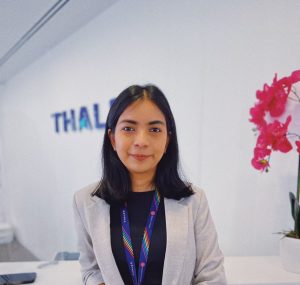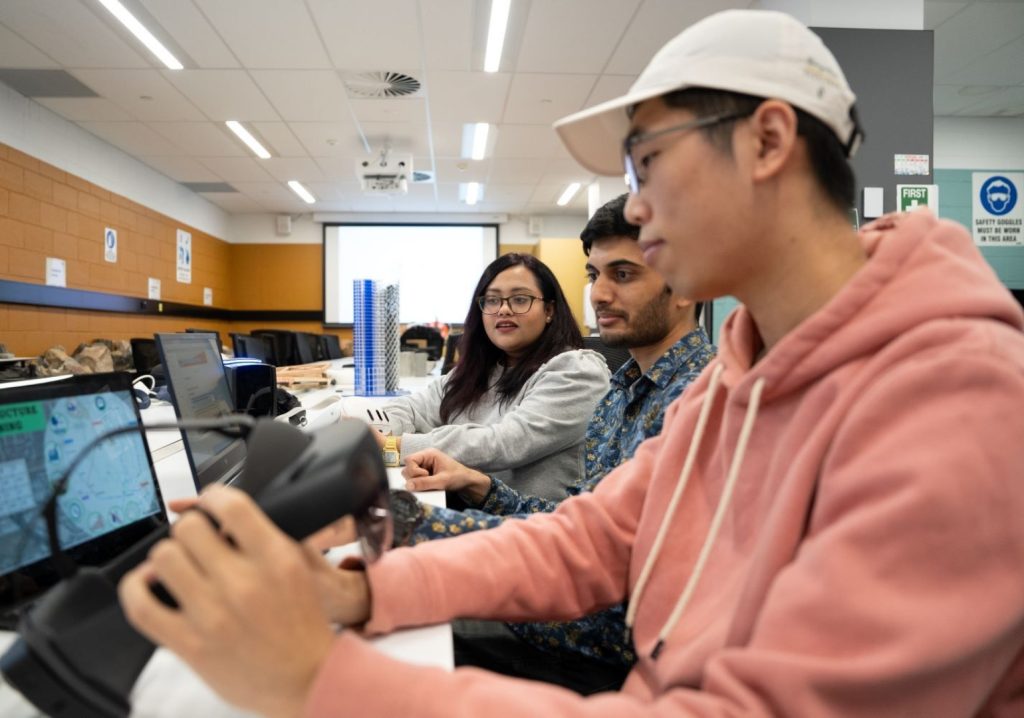RMIT’s engineering Masters programs are distinguished by their strategic blend of foundational theoretical knowledge and highly valued, industry-relevant skills.
Given her lifelong fascination with flight and aircraft, Niveditha Premlal’s choice to pursue a career in aerospace engineering was a natural one. However, choosing the right institution for her Masters program was a trickier decision.
What ultimately drew her to RMIT’s engineering courses were their strong industry touchpoints and emphasis on practical application.

“RMIT offered a lot of industry collaboration and work-integrated learning, which was crucial for my career,” she told create. “It also offers a lot of industry events and networking opportunities.
“The course definitely prepares you for the technical part of the job, but it also equips you with a broader understanding of the industry.”
For instance, capstone projects often involve real-world problems provided by industry partners, giving students practical experience and exposure to potential employers.
Leveraging these networking and collaboration opportunities helped her secure internships, including one with Rolls Royce based in Germany, and eventually her current role as a Verification and Validation Engineer with Thales.
Opening doors
By fostering a strong connection between academia and industry, RMIT ensures that its graduates are not only well-prepared for the challenges of modern engineering but also equipped to make significant contributions to their industries.
RMIT’s Engineers Australia-accredited engineering Masters programs are structured to provide a solid foundation of transferable skills in the first year, focusing on essential fields such as engineering practice and design, innovation technology management, risk and project management and systems engineering.
The programs are designed and continually adjusted to account for the evolving needs of the engineering sector, said Professor Margaret Jollands, Deputy Dean of Learning and Teaching at RMIT’s School of Engineering.
“Engineering practice and design are a really strong feature of RMIT programs,” she said. “For instance, the first-year block covers modelling and simulation of systems, which we know is a growing need.
“As technology becomes more complex, all engineering systems become more complex, and this is noted by industry as an area they would like to see graduates having higher capability.”
The second year allows students to delve deeper into their specific area of interest through elective courses and specialised minors that align with their specific career goals.
Throughout the programs, hands-on experience prepares students for the complexities of the modern engineering landscape, where interdisciplinary knowledge and practical skills are increasingly essential.
“We anticipate about half of our graduates will work in design offices, with the other half working on-site,” Jollands noted. “Our programs ensure graduates have the skills required to thrive in both settings.”
The program allowed Premlal to settle on her chosen specialty in systems engineering, a field that her studies showed her is growing in importance.
“Systems engineering is critical in aerospace, and it opened up more doors for specialised career opportunities,” she said.
This specialisation enabled her to work on projects involving the verification and validation of air traffic management systems, directly impacting the safety and efficiency of air travel.
As her career trajectory gains more momentum, she is excited by the possibilities created by the versatility of skill and experiences gained through her Masters program.
“It’s still a bit of a toss-up,” Premlal said. “I can either go super-specialised, into more of a design role, or I could go into a team management role. Either way, the course has prepared me well.”
Work-integrated learning
The practical application of academic concepts is a key feature of RMIT’s Masters programs, bridging the gap between abstract learning and evolving industry practice. This is supported by regular industry touchpoints throughout the course, Jollands said.
“Given our close relationship with industry partners, a feature of our courses is having industry speakers come in as guest lecturers, and [creating] capstone projects which are based on real industry projects or are sponsored by industry,” she said.
Working full-time while completing his masters in civil engineering gave Peter Tautor, now a Building Leader at Aurecon, continuous opportunities to apply his knowledge in real-time.
“It made the learning experience much more tangible,” he said. “The Masters program accelerated my understanding of technical knowledge. What I learned in two years could take 10-15 years to learn through work experience.”
One of the pivotal experiences for Tautor during his Masters program was his research project on blast analysis and design. This project was closely aligned with his work in the petrochemical oil and gas industry, providing a practical context for his academic work.
“I did a lot of work on it, and it was very rewarding. My advisor was fantastic, guiding me the whole way,” he said. “It was very much a two-way relationship where he was also invested in the outcome.”
The project’s focus on blast-resistant buildings tied directly into the kind of projects Tautor was and still is involved in professionally, making the learning process highly relevant and immediate.
His advice to prospective students, especially mature-age students juggling various responsibilities, is clear: Go for it.
“It can be overwhelming, but the support from RMIT and the outcomes are worth it. It’s an investment in your career that pays dividends.”

